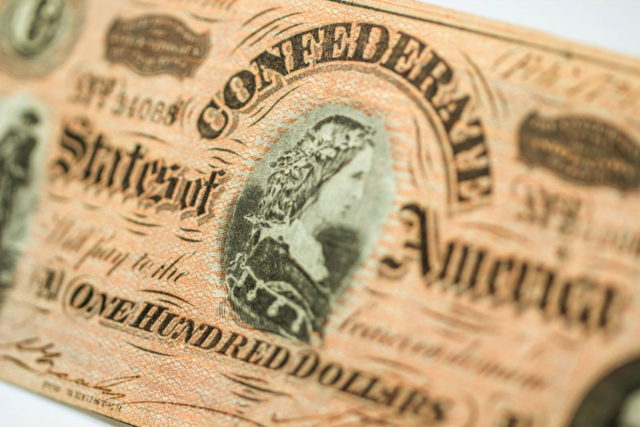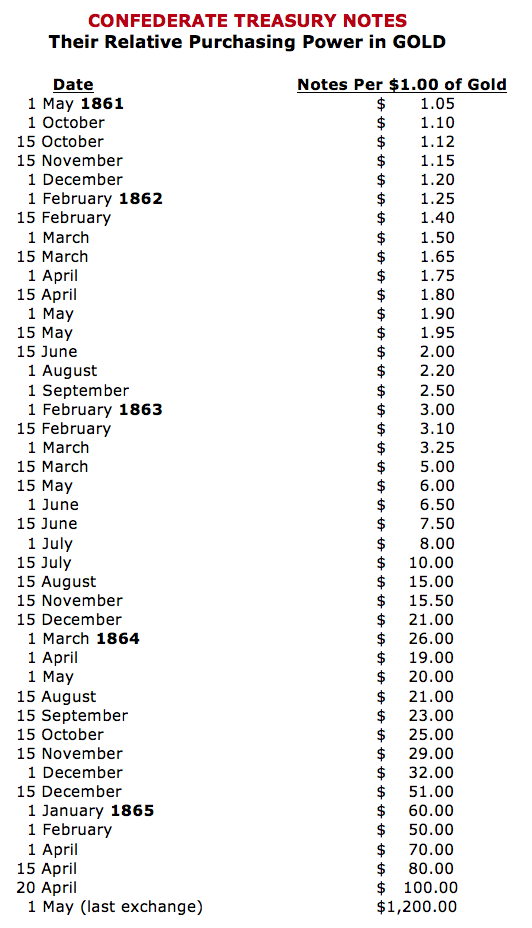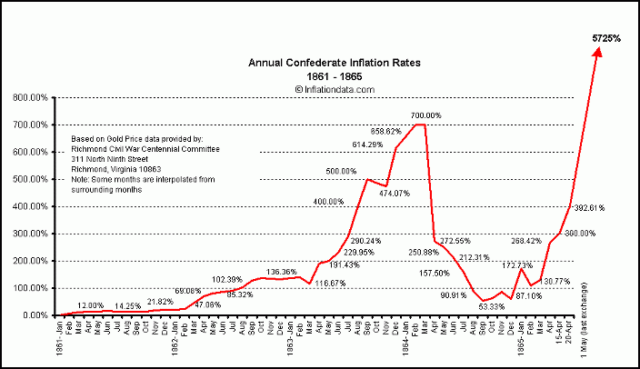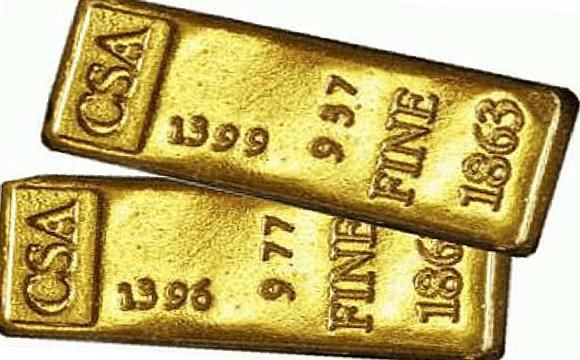 The Chart attached below shows the Annualized Confederate Inflation Rate. The Annual Inflation Rates are calculated from information provided by the Richmond Civil War Centennial
The Chart attached below shows the Annualized Confederate Inflation Rate. The Annual Inflation Rates are calculated from information provided by the Richmond Civil War Centennial
Committee on the purchasing power of Confederate Notes.
The table below shows the actual Confederate Treasury Note Inflation data that was used to develop this chart. At the beginning of the war on January 1, 1861 one Confederate dollar would purchase one gold dollar. By May it took $1.05 Confederate dollars to purchase one Gold Dollar or 5% inflation in four months. By February of 1861 it took $1.25 Confederate Dollars to buy one Gold Dollar or 25% inflation. By February 1863 it took $3.00 Confederate Dollars to buy one Gold Dollar or 200% inflation since 1861 but because inflation is generally measured Annually we have to compare the price to the price a year earlier. So from $1.25 to $3.00 is 140% inflation.
Interestingly, the inflation rate actually fell during 1864. Why?
According to the San José State University Department of Economics

From October of 1861 to March of 1864 the commodity price index rose an average rate of 10 percent per month. When the Civil War ended in April 1865 the cost of living in the South was 92 times what it was before the war started. This inflation was obviously caused by the expansion of the money supply. The role of the money supply in establishing the price level is confirmed even more strongly by the results of an attempt to curb the growth of the money supply in 1864.
In February the Confederate Congress decreed a currency reform. All bills greater than five dollars were to be converted into bonds paying 4 percent interest. All bills not converted by April 1 would be exchanged for a new issue at a ratio of 2 for 3. Prior to the reform people spent wildly and drove prices up 23 percent in one month. But, by May 1864, the reform had been completed and the stock of money was reduced by one third. The general price index declined. Eugene Lerner, an economist who studied this inflation, commented on this result:
This price decline took place in spite of invading Union armies, the impending military defeat, the reduction of foreign trade, the disorganized government, and the low morale of the Confederate army. Reducing the stocks of money had a more significant effect on prices than these powerful forces.
 So we can see an explicit example of how currency creation results in inflation. Note that the devaluation of the final month from $100 to $1200 may not have been so much a result of currency creation as the fear that once the war was lost the currency would be totally nonredeemable.
So we can see an explicit example of how currency creation results in inflation. Note that the devaluation of the final month from $100 to $1200 may not have been so much a result of currency creation as the fear that once the war was lost the currency would be totally nonredeemable.
The method used to create the chart to the right, was to create an index setting January 1, 1861 equal to 100 and adjusting the following months to come up with an Inflation index figure for the first of each succeeding month by interpolating from surrounding months if necessary to fill in the blanks. Note that some months have additional Inflation data for the 15th of the month while other months have no data available. In order to perform the annual inflation calculations we needed a figure for the first of each month. So for example, in order to come up with an inflation number for June 1, 1862 we had to interpolate between the May 15th price of $1.95 and the June 15th price of $2.00
 SOURCE: Richmond Civil War Centennial
SOURCE: Richmond Civil War Centennial
Written by Charleston Voice and published by 24h GOLD ~ August 24, 2013
 FAIR USE NOTICE: This site contains copyrighted material the use of which has not always been specifically authorized by the copyright owner. We are making such material available in our efforts to advance understanding of environmental, political, human rights, economic, democracy, scientific, and social justice issues, etc. We believe this constitutes a ‘fair use’ of any such copyrighted material as provided for in section 107 of the US Copyright Law. In accordance with Title 17 U. S. C. Section 107, the material on this site is distributed without profit to those who have expressed a prior interest in receiving the included information for research and educational purposes. For more information go to: http://www.law.cornell.edu/uscode/17/107.shtml“
FAIR USE NOTICE: This site contains copyrighted material the use of which has not always been specifically authorized by the copyright owner. We are making such material available in our efforts to advance understanding of environmental, political, human rights, economic, democracy, scientific, and social justice issues, etc. We believe this constitutes a ‘fair use’ of any such copyrighted material as provided for in section 107 of the US Copyright Law. In accordance with Title 17 U. S. C. Section 107, the material on this site is distributed without profit to those who have expressed a prior interest in receiving the included information for research and educational purposes. For more information go to: http://www.law.cornell.edu/uscode/17/107.shtml“








